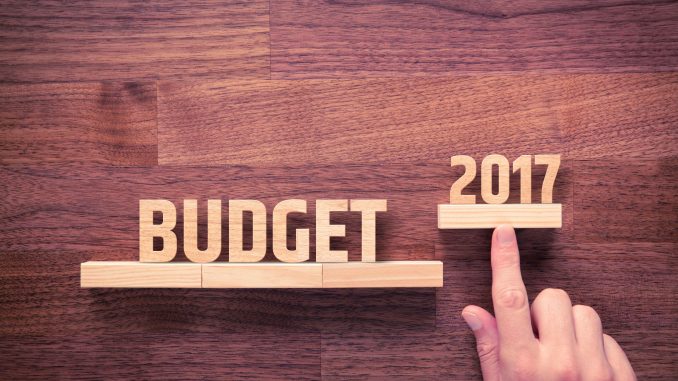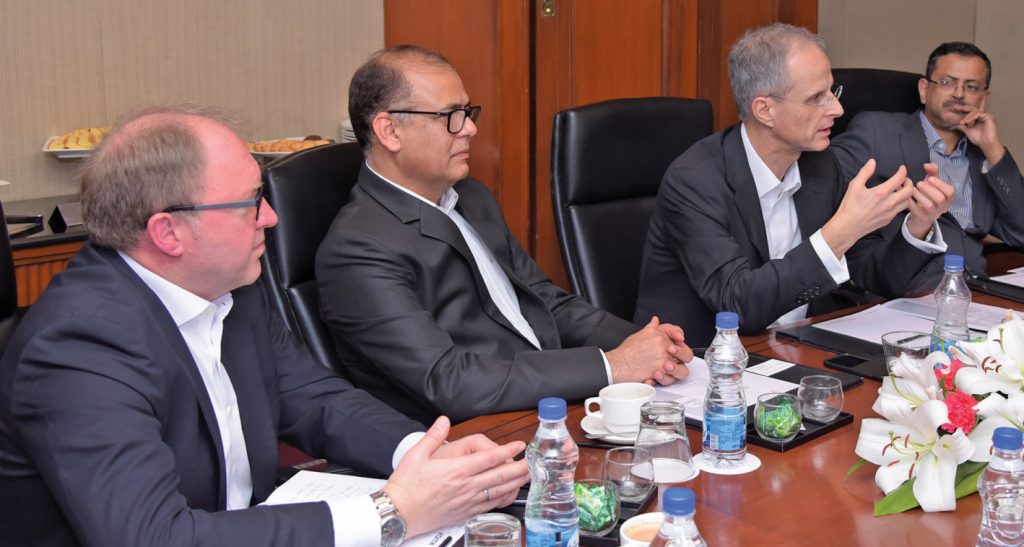
German technology conglomerate Voith, which has a global presence across a number of industries including energy and recorded sales of Euro 4.3 billion in 2015-16, marks its 150th anniversary this year. Its presence in India dates back to 1911 when it executed its first order for the supply of electromechanical equipment to a hydropower project in Maharashtra. It has since expanded significantly and has three manufacturing facilities, in Vadodara, Faridabad and Hyderabad, and all its business divisions namely, Hydro, Paper, Turbo and Digital Solutions, are firmly entrenched in India. Significantly, Voith Hydro enjoys a market share of nearly 25 per cent in the hydropower sector globally. India is also an important regional hub for Voith’s operations in the Southeast Asian (SEA) and African markets. In an interview with Power Line, Voith’s global board members, Dr Roland Muench, President and CEO, Voith Digital Solutions; Uwe Wehnhardt, President and CEO, Voith Hydro; and Ravi Kalra, Managing Director and CEO, Voith Hydro India; Sumeet Mazumdar, Member of Board of Management – Large Hydro, shared their perspective on the company’s global and India performance, future plans and the challenges ahead…
How has the performance of Voith Hydro in India been during the past years? What are the emerging global trends in the hydro segment?
Some of the broad trends in the segment include run-of-the-river projects becoming more popular than dams. Also, several countries like Germany have a lot of wind and solar energy, therefore, pumped storage projects will be a very important part of the energy mix with a number of projects under development globally. There is also a lot of discussion on the positive impact of hydro on the energy sector overall. Hydopower being an indigenous resource, its successful development leads to energy security of nations. Voith’s performance in India has been improving consistently. Since our entry into the Indian market, we have proved ourselves to be technically competent and our products have been highly appreciated by users. We have delivered many large and small projects successfully and have been preferred partners of many customers. We have exported turbines and generators across the globe from India, including to countries in Europe, the Americas, the SEA region and Africa. Overall, Voith’s performance in the Indian market has been satisfactory; the performance of Voith India as a company has been outstanding based on the success in the SEA region.
What are the issues, challenges and risks faced by Voith in the Indian market?
While the hydropower potential in India is huge, development has been sluggish due to various reasons that include imbalance in the energy pricing mix, inaccessible finance and the non-inclusion of hydropower in the ambit of renewable energy. Clearances and bureaucratic hurdles top the challenges for developers, which, by extension, hamper our business in India. The fact that hydropower is not considered a renewable form of energy in the country has severely affected its growth. Lack of a declared policy roadmap for the segment has led to ambiguity, further resulting in low investor interest, which ultimately impacts our revenues from this business. Another dampener associated with the Indian market is the lack of appreciation about the positive role played by hydro in the growth of communities in remote areas around project sites and ultimately the nation.
What is your perspective on the government policies in place for the hydropower segment?
The industry is waiting for a new hydro policy that will pave the path for the growth of the segment over the next few years. While public sector companies such as NHPC need to make greater investments in developing new projects, the private sector too needs to be more involved, which would only be possible with the help of easy access to finance and a favourable business environment. To enable this, a new policy is required that would bring the large hydro segment under the purview of renewable energy. This will greatly boost investor confidence and provide an enabling environment for the sector. The stakeholders need to understand that there is no other alternative source of energy that is as reliable as hydropower. The efficiency and availability of these plants are high and hydropower does not suffer from the issues of variability that solar and wind energy does. In light of these advantages, policymakers need to focus on the hydropower sector along with other sources of renewable energy. India, being richly endowed with hydropower potential, there are ample opportunities for run-of-the-river and pumped storage hydro plants in the Himalayan region as well as in the southern peninsula and the Ghats.
What is your view on the small-hydro segment?
Voith is quite bullish on the small-hydro segment in India. The 2022 targets and renewable energy policies extended to it have resulted in some development in this space; however, given its potential in India, there is still much more to achieve. Also, micro hydel power is a good idea for power generation and distribution in localised networks in remote and inaccessible areas in the country. These power plants could be completely containerised leading to quick installation and commissioning.
What are some of the key solutions and technologies that Voith Digital has implemented or is planning to introduce?
We have developed solutions that provide remote information about generation, tripping, outage events, etc. to plant owners. Some of the plants are completely unmanned. We are now working to develop digital systems using cloud-based solutions. We are integrating mathematical models of how a power plant works with the cloud. This will enable assessment of a machine anytime and from anywhere. We will also be able to predict the weather and accordingly know how the plant should be run to get the optimum output. We are developing solutions that will allow us to assess the condition of equipment such as generators and turbines externally to overcome the complex task of dismantling them, and subsequently reassembling them. Overall, Voith has plans to revolutionise the sector with its digital agenda.

How important is the renovation and modernisation market for Voith Hydro?
From a global perspective, it is very important. We have built numerous service centres in different regions of the world, which makes it easier for us to reach out. Voith has developed processes and systems in order to make this job as fast and as reliable as possible. Modernisation is a very big part of our business as new hydro plants are not coming up every year and modernisation is a more constant business. Under modernisation, we provide solutions that help increase the power output and efficiency of power plants. In India, we are implementing two modernisation projects for Odisha Hydro Power Corporation Limited – the Hirakud and Chiplima hydroelectric projects. Voith is also doing a modernisation project for NHPC’s Salal hydro project, wherein Voith will carry out the supply and installation works for the installation of six new runners. The first turbine with the new runner is likely to be commissioned in March 2017. This will be followed by the commissioning of subsequent units with new runners according to the customer’s replacement schedule every year.
As a multinational corporation and an investor, how do you find the process of investment in India, easy or not so easy?
We think India has huge potential. German industry has high hopes from the present government, but we still experience some regulatory hurdles in the market. The European Union is negotiating with India regarding agreements on investments. So, we think the actual geopolitical situation is a good opportunity for this bilateral agreement. Overall, we think that India offers a lot of potential for companies like Voith, but the impetus is now on the government to reduce the roadblocks. Looking back at the last 40 or 50 years, we can see that we have had a good experience here. It is easier here than in a lot of other countries.
What is your outlook for the sector in India for the next few years and Voith’s role in it?
The power sector in India is passing through a critical phase. Generation capacity has been added in the past few years but unfortunately, utilisation levels are low. The PLF is just about 65 per cent for most power plants, which is an area of concern. However, steps are already in place in the distribution segment to generate extra demand. We expect the power sector in India to see good growth in future when manufacturing picks up, which we expect in the near future as well as when the appropriate transmission and distribution systems are in place. Recapitalisation of the state utilities, which is another key step that the government has taken, would enhance their capacity to buy power. So, we see steps in the right direction from the government, which would facilitate growth in the future. As an equipment supplier, we see the market in India to be bright in the future. With respect to the hydro segment, we are really looking forward to the new hydro policy of the government. Considering the huge untapped potential for hydropower in the northeastern and the Himalayan regions, as well as considering that only 15 per cent of dams generate power while the rest are used for irrigation and other purposes, the potential of power production from these is significant. We have the technology that can help install turbines at the existing dams, which are not currently being used for generation, and thereby add value to them. We have recently developed a technology (StreamDiver) that works on low heads (around 5 metres) and can help generate power from even very small canals. With the kind of turbines we have, small-hydro can play a major role in the electrification of hilly areas, and at very low investments and easy operations.
Overall, with the early-start advantages, thorough localisation and a highly successful track record of building complex projects in India, we remain highly optimistic for the region for our future business.
